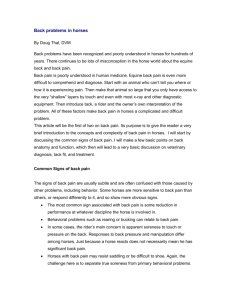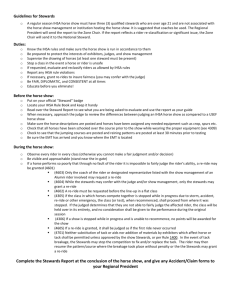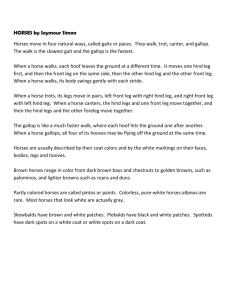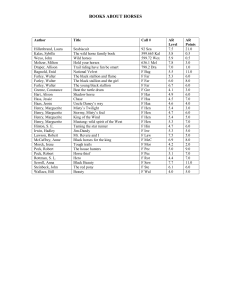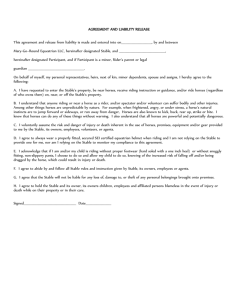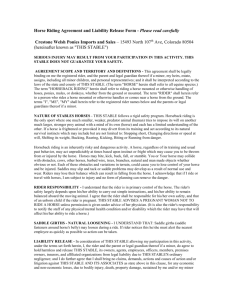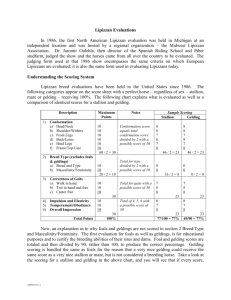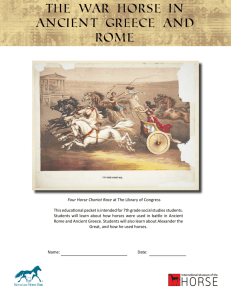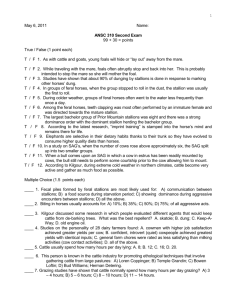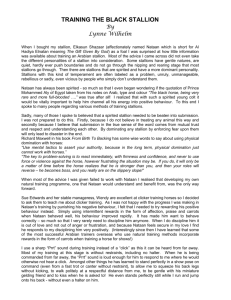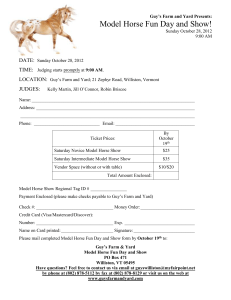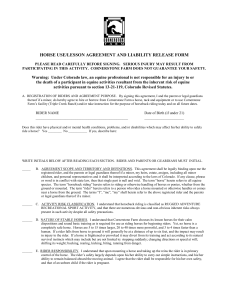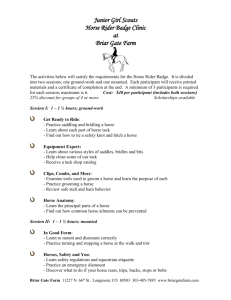Lipizzaners Display Centuries Of Breeding Almost from the
advertisement
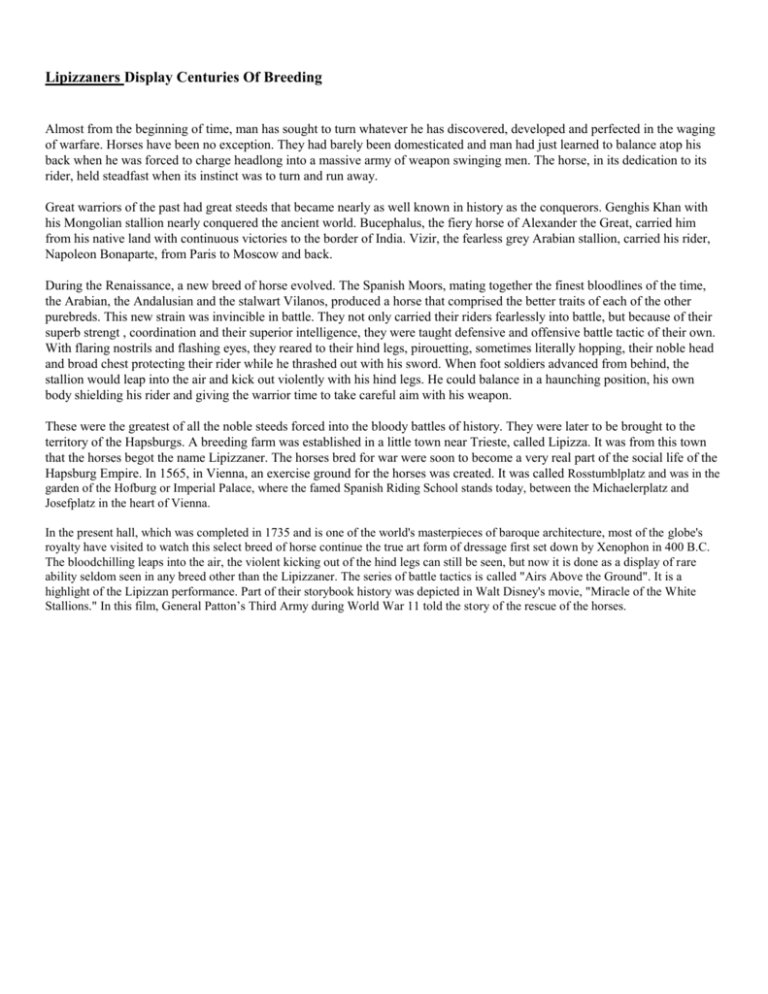
Lipizzaners Display Centuries Of Breeding Almost from the beginning of time, man has sought to turn whatever he has discovered, developed and perfected in the waging of warfare. Horses have been no exception. They had barely been domesticated and man had just learned to balance atop his back when he was forced to charge headlong into a massive army of weapon swinging men. The horse, in its dedication to its rider, held steadfast when its instinct was to turn and run away. Great warriors of the past had great steeds that became nearly as well known in history as the conquerors. Genghis Khan with his Mongolian stallion nearly conquered the ancient world. Bucephalus, the fiery horse of Alexander the Great, carried him from his native land with continuous victories to the border of India. Vizir, the fearless grey Arabian stallion, carried his rider, Napoleon Bonaparte, from Paris to Moscow and back. During the Renaissance, a new breed of horse evolved. The Spanish Moors, mating together the finest bloodlines of the time, the Arabian, the Andalusian and the stalwart Vilanos, produced a horse that comprised the better traits of each of the other purebreds. This new strain was invincible in battle. They not only carried their riders fearlessly into battle, but because of their superb strengt , coordination and their superior intelligence, they were taught defensive and offensive battle tactic of their own. With flaring nostrils and flashing eyes, they reared to their hind legs, pirouetting, sometimes literally hopping, their noble head and broad chest protecting their rider while he thrashed out with his sword. When foot soldiers advanced from behind, the stallion would leap into the air and kick out violently with his hind legs. He could balance in a haunching position, his own body shielding his rider and giving the warrior time to take careful aim with his weapon. These were the greatest of all the noble steeds forced into the bloody battles of history. They were later to be brought to the territory of the Hapsburgs. A breeding farm was established in a little town near Trieste, called Lipizza. It was from this town that the horses begot the name Lipizzaner. The horses bred for war were soon to become a very real part of the social life of the Hapsburg Empire. In 1565, in Vienna, an exercise ground for the horses was created. It was called Rosstumblplatz and was in the garden of the Hofburg or Imperial Palace, where the famed Spanish Riding School stands today, between the Michaelerplatz and Josefplatz in the heart of Vienna. In the present hall, which was completed in 1735 and is one of the world's masterpieces of baroque architecture, most of the globe's royalty have visited to watch this select breed of horse continue the true art form of dressage first set down by Xenophon in 400 B.C. The bloodchilling leaps into the air, the violent kicking out of the hind legs can still be seen, but now it is done as a display of rare ability seldom seen in any breed other than the Lipizzaner. The series of battle tactics is called "Airs Above the Ground". It is a highlight of the Lipizzan performance. Part of their storybook history was depicted in Walt Disney's movie, "Miracle of the White Stallions." In this film, General Patton’s Third Army during World War 11 told the story of the rescue of the horses.









